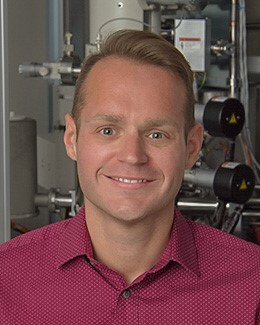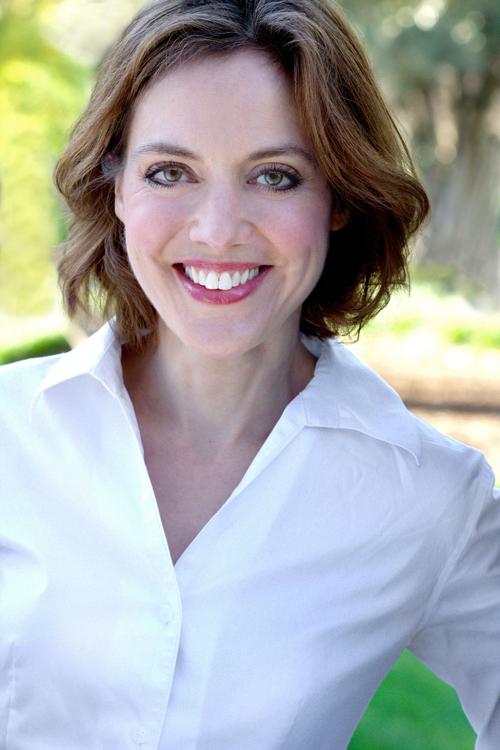LPL Welcomes Three New Faculty Members
 Dr. Jessica Barnes joined the LPL faculty as an Assistant Professor in August (2019), after holding a position as a postdoctoral fellow at NASA’s Johnson Space Center. Jess’ research centers on understanding the origin and evolution of volatiles in the inner Solar System. She utilizes a combination of electron microscopy and high-resolution secondary ion mass spectrometry to study extraterrestrial materials. Jess’ research background is in lunar mineralogy and geochemistry. Most recently she has been using coordinated electron and ion beam studies of meteorites to investigate the evolution of water in the Martian crust and to assess the inventories and origins of volatiles on primitive chondrite and achondrite parent bodies.
Dr. Jessica Barnes joined the LPL faculty as an Assistant Professor in August (2019), after holding a position as a postdoctoral fellow at NASA’s Johnson Space Center. Jess’ research centers on understanding the origin and evolution of volatiles in the inner Solar System. She utilizes a combination of electron microscopy and high-resolution secondary ion mass spectrometry to study extraterrestrial materials. Jess’ research background is in lunar mineralogy and geochemistry. Most recently she has been using coordinated electron and ion beam studies of meteorites to investigate the evolution of water in the Martian crust and to assess the inventories and origins of volatiles on primitive chondrite and achondrite parent bodies.
Jess was born in London, grew up in Belfast, and later moved to Scotland where she graduated from the University of St. Andrews with a B.Sc. in Geosciences. She obtained her Ph.D. in Planetary and Space Sciences from The Open University (England). Her doctoral work focused on measuring water in lunar samples in order to better understand the accretion history and magmatic evolution of the Moon. As pastimes, Jess enjoys going to the gym, hiking, and travelling.
 Dr. Pierre Haenecour joined LPL as an Assistant Professor in October 2019. He grew up in Brussels (Belgium) and graduated with B.A. and M.S. degrees in Geology and Geochemistry from the Free University of Brussels. In 2011, Pierre moved to St. Louis (Missouri) for his Ph.D. in Earth and Planetary Sciences at Washington University, where he studied stardust grains (also referred as circumstellar ‘presolar’ grains) identified in early solar system materials, such as meteorites and micrometeorites. He then worked at LPL as a postdoctoral research associate with Dr. Tom Zega to investigate the origin of organic matter in meteorites.
Dr. Pierre Haenecour joined LPL as an Assistant Professor in October 2019. He grew up in Brussels (Belgium) and graduated with B.A. and M.S. degrees in Geology and Geochemistry from the Free University of Brussels. In 2011, Pierre moved to St. Louis (Missouri) for his Ph.D. in Earth and Planetary Sciences at Washington University, where he studied stardust grains (also referred as circumstellar ‘presolar’ grains) identified in early solar system materials, such as meteorites and micrometeorites. He then worked at LPL as a postdoctoral research associate with Dr. Tom Zega to investigate the origin of organic matter in meteorites.His current research interests focus on the building blocks and early history of the Solar System, and the origin of life through the coordinated study of circumstellar and interstellar dust grains and organic molecules in unequiliberated planetary materials (micrometeorites and interplanetary dust particles).
 Dr. Amy Mainzer, one of the world's leading scientists in asteroid detection and planetary defense, began her career at LPL this fall (2019). Dr. Mainzer was previously a senior research scientist in the Science Division at NASA's Jet Propulsion Laboratory, where she specialized in astrophysical instrumentation and infrared astronomy.
Dr. Amy Mainzer, one of the world's leading scientists in asteroid detection and planetary defense, began her career at LPL this fall (2019). Dr. Mainzer was previously a senior research scientist in the Science Division at NASA's Jet Propulsion Laboratory, where she specialized in astrophysical instrumentation and infrared astronomy.
As principal investigator of NASA's Near-Earth Object Wide-field Infrared Survey Explorer mission, or NEOWISE, Dr. Mainzer has overseen the largest space-based asteroid-hunting project in history, resulting in the detection and characterization of an unprecedented number of asteroids and comets, including objects that could potentially pose a hazard to Earth at some point in the future. Dr. Mainzer also is the principal investigator of the proposed NASA Near-Earth Object Camera, or NEOCam, a next generation space telescope that would use a similar scientific approach to fulfill a mandate from the U.S. Congress to discover nearly all of the space rocks that could pose a significant threat to Earth.
Dr. Mainzer holds a doctorate from the University of California, Los Angeles and a Master of Science degree from the California Institute of Technology. She graduated with honors from Stanford University with a Bachelor of Science. Prior to joining JPL in 2003, she worked as an engineer at Lockheed Martin, where she built the fine guidance camera for NASA’s Spitzer Space Telescope.
Passionate about making science accessible to all, Mainzer serves as the curriculum adviser and on-camera host for the PBS Kids series "Ready Jet Go!" – a television show aimed at teaching space and Earth science to children ages 3-8 that airs in 176 countries around the world with nearly 300 million views. Mainzer also has appeared in numerous interviews for the History Channel, National Geographic, Discovery Channel, the BBC and other networks.
In 2018, she received the NASA Exceptional Public Service medal for her work on near-Earth asteroids. Other awards include the NASA Exceptional Scientific Achievement Medal (2012), the NASA Exceptional Achievement Medal (2011), and several NASA group achievement awards for her contributions to the Spitzer, WISE and NEOWISE missions.

